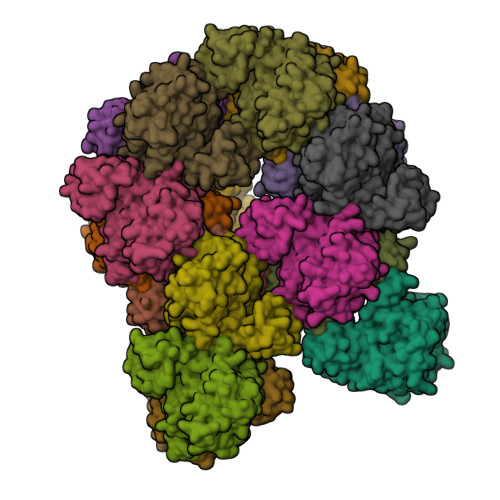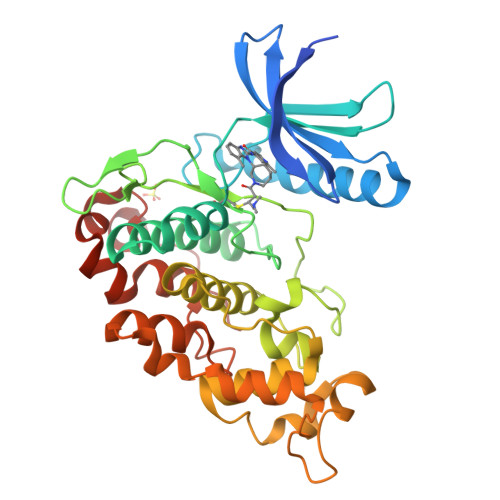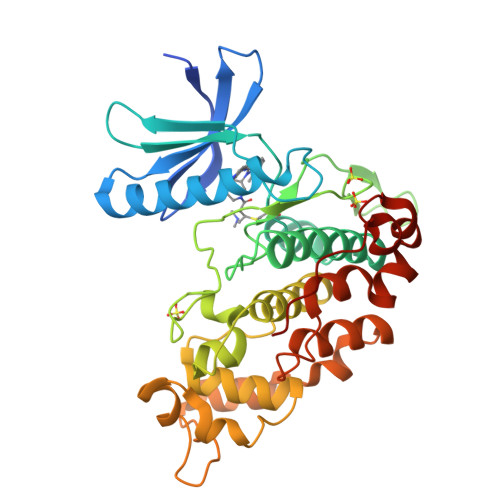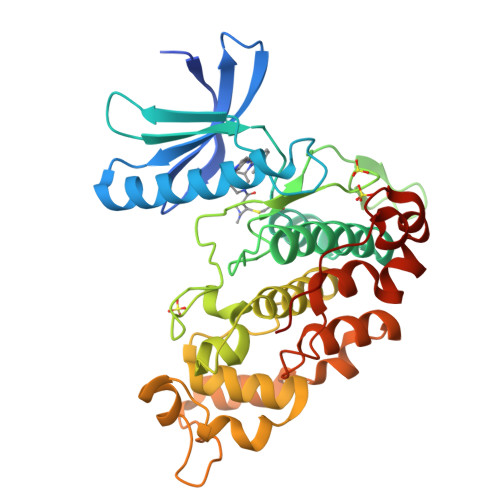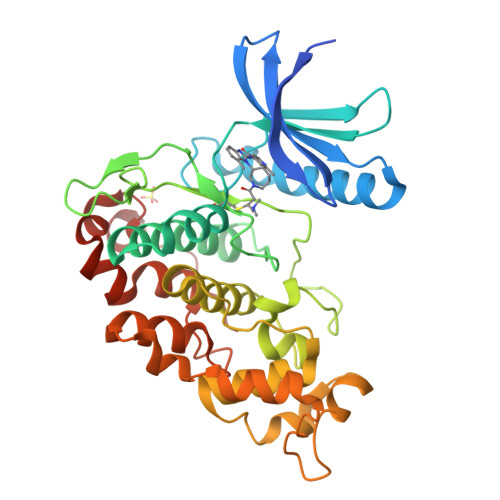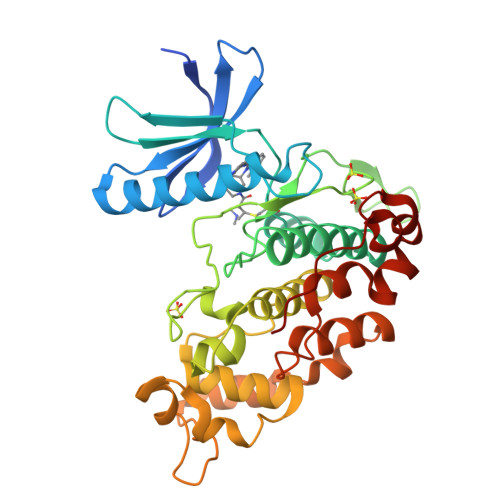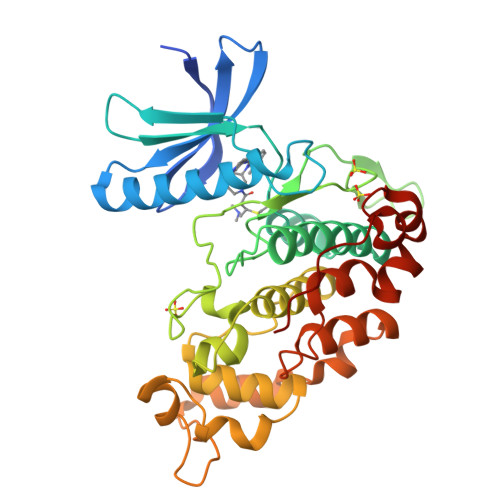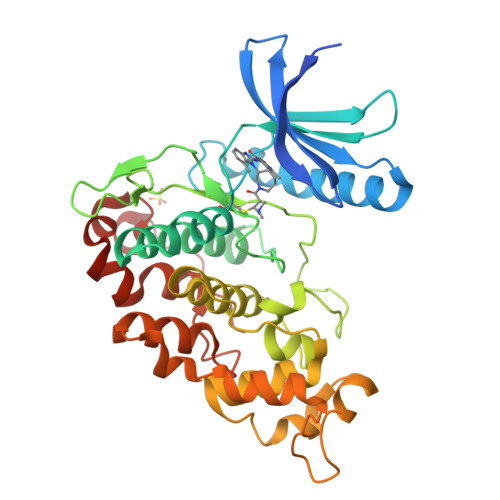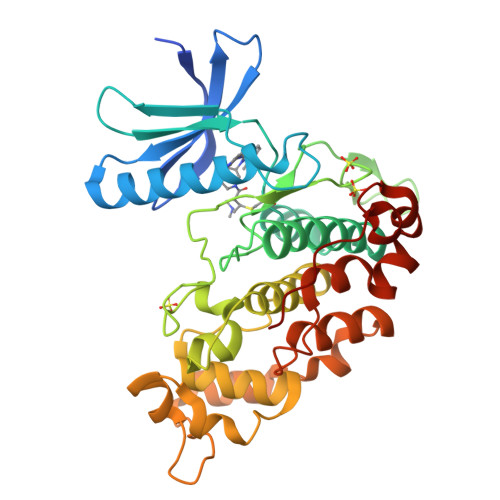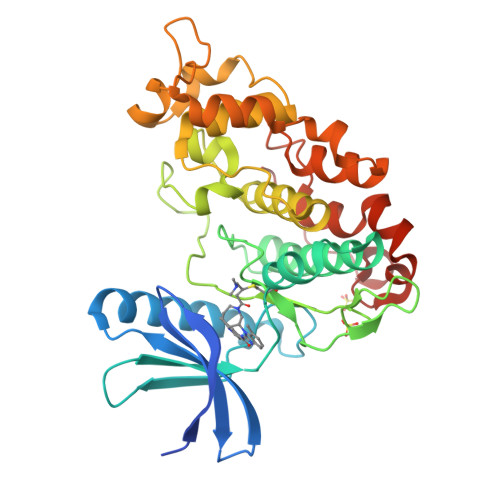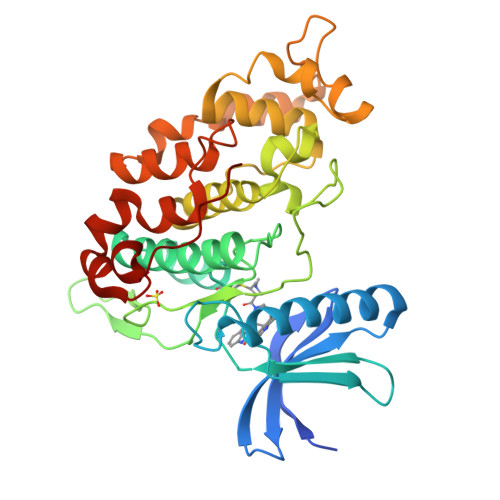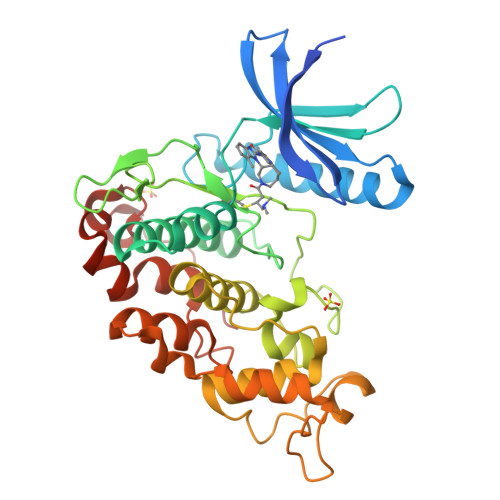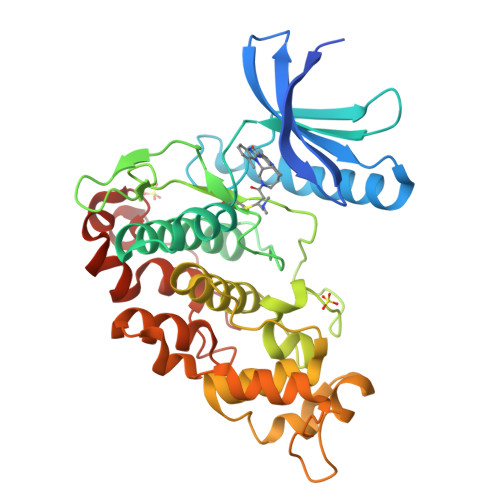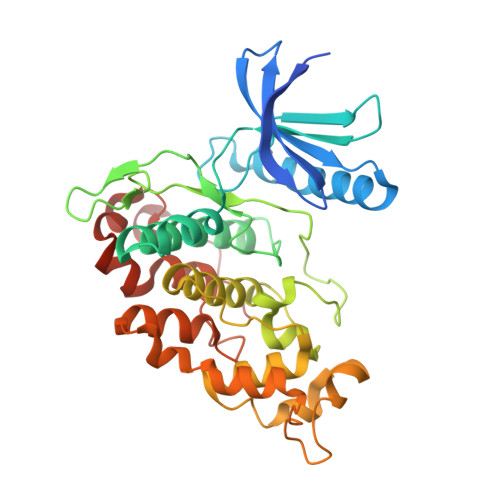Targeting the trypanosome kinetochore with CLK1 protein kinase inhibitors.
Saldivia, M., Fang, E., Ma, X., Myburgh, E., Carnielli, J.B.T., Bower-Lepts, C., Brown, E., Ritchie, R., Lakshminarayana, S.B., Chen, Y.L., Patra, D., Ornelas, E., Koh, H.X.Y., Williams, S.L., Supek, F., Paape, D., McCulloch, R., Kaiser, M., Barrett, M.P., Jiricek, J., Diagana, T.T., Mottram, J.C., Rao, S.P.S.(2020) Nat Microbiol 5: 1207-1216
- PubMed: 32661312
- DOI: https://doi.org/10.1038/s41564-020-0745-6
- Primary Citation of Related Structures:
6Q2A - PubMed Abstract:
The kinetochore is a macromolecular structure that assembles on the centromeres of chromosomes and provides the major attachment point for spindle microtubules during mitosis. In Trypanosoma brucei, the proteins that make up the kinetochore are highly divergent; the inner kinetochore comprises at least 20 distinct and essential proteins (KKT1-20) that include four protein kinases-CLK1 (also known as KKT10), CLK2 (also known as KKT19), KKT2 and KKT3. Here, we report the identification and characterization of the amidobenzimidazoles (AB) protein kinase inhibitors that show nanomolar potency against T. brucei bloodstream forms, Leishmania and Trypanosoma cruzi. We performed target deconvolution analysis using a selection of 29 T. brucei mutants that overexpress known essential protein kinases, and identified CLK1 as a primary target. Biochemical studies and the co-crystal structure of CLK1 in complex with AB1 show that the irreversible competitive inhibition of CLK1 is dependent on a Michael acceptor forming an irreversible bond with Cys 215 in the ATP-binding pocket, a residue that is not present in human CLK1, thereby providing selectivity. Chemical inhibition of CLK1 impairs inner kinetochore recruitment and compromises cell-cycle progression, leading to cell death. This research highlights a unique drug target for trypanosomatid parasitic protozoa and a new chemical tool for investigating the function of their divergent kinetochores.
Organizational Affiliation:
York Biomedical Research Institute and Department of Biology, University of York, York, UK.








